Curd Rice, or thayir sadam, is a savory comforting South Indian dish made with basmati rice, curd (yogurt), tempered spices, and fresh fruits and vegetables. It's ready in 15 minutes and typically served as a cooling dish during the summer, at weddings, or as an offering to god at temples. Serve it with papad or achaar!
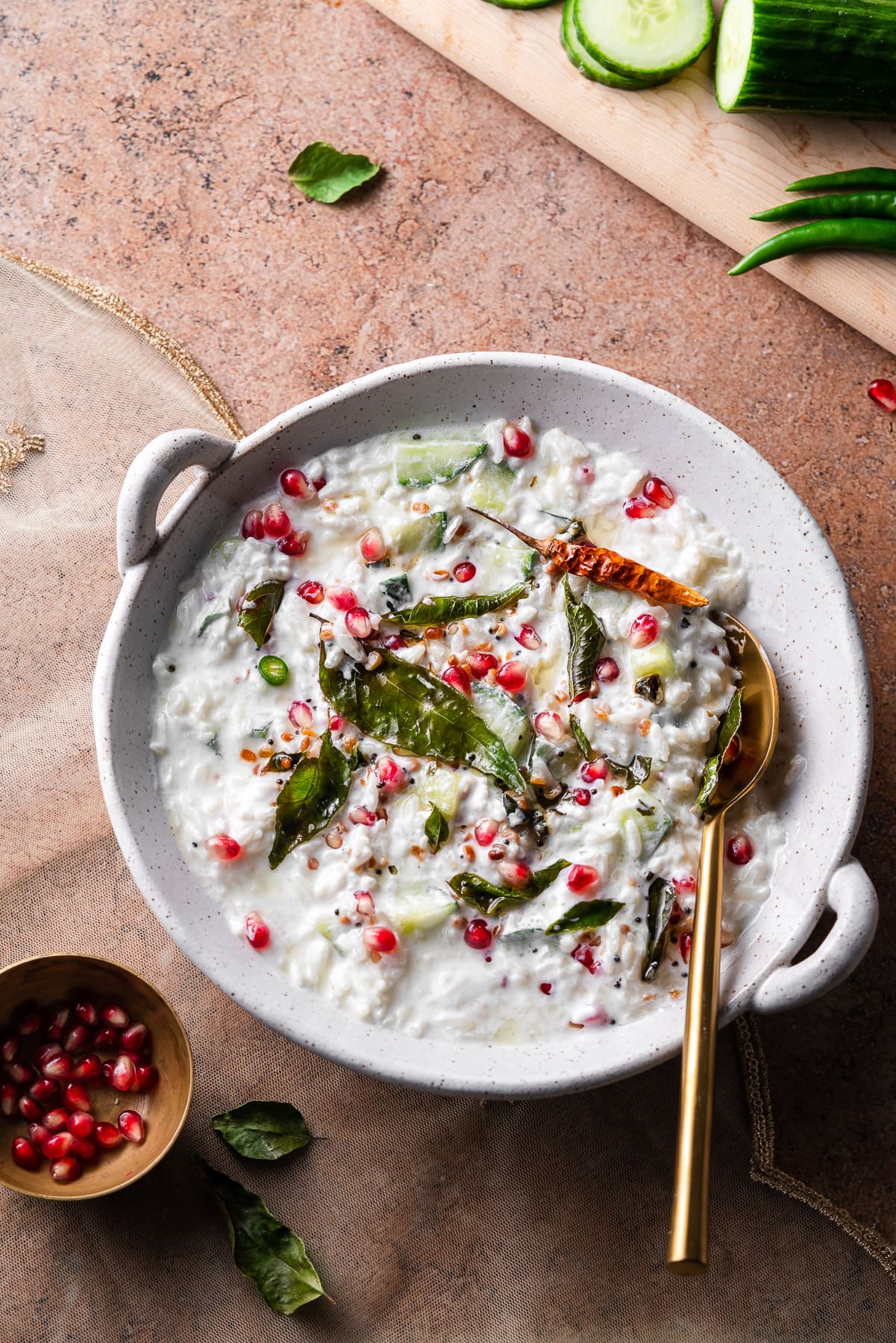
Being North Indian, I was unfortunately not exposed to a lot of South Indian dishes. My mom, thankfully, makes some things super well which I love learning from her! Her Coconut Chutney with fresh dosas and sambar on Sunday mornings were a favorite, along with freshly steamed idlis every now and then.
Curd Rice, thayir sadam, dahi chawal... this dish has so many names in India and is widely enjoyed throughout the diaspora! In my home, we call it dahi chawal and enjoy it in it's simplest form - rice with curd, salt, and sometimes with served achaar or papad along with our meal.
I especially love Curd Rice because it has so many textures and flavors. It's sweet from the dahi and fruit, yet savory from the tadka. There's crunch from the cucumbers, pomegranates, and fried dal. Yet, the rice and curd itself are smooth and mushy. If you've overcooked your rice, this is the perfect dish to make instead of tossing it out.
It's especially comforting during the summer due to the cooling dahi. I love that the dish is so homey yet it's served in temples and even weddings! Completely guilty of taking a heaping spoon of Curd Rice on my plate during the buffet lunches at weddings.
Jump to:
What is Curd Rice?
Curd Rice, or thayir sadam in Tamil and daddojanam in Telugu, is an Indian dish made of rice and curd (an Indian whole milk yogurt often referred to as dahi). It is most popular in southern Indian states such as Kerala, Tamil Nadu, Karnataka, Andhra Pradesh, and more.
There are two versions of curd rice that can be found all over India. The first is an untempered version with just rice and curd that is served with meals in the homes of Indian families for cooling off the mouth from spicy food. The tempered version is traditionally served during special occasions and at the temple as prasad (blessed food). This version usually has fresh fruits, vegetables, and a tadka with chilis and spices.
Curd Rice in its simplest form is also one of the first solid foods that babies and young children are exposed to in India.
Note: Please check with your doctor beforehand if you intend on making this for your child.
What is a Tadka?
There's a few ways of working with Indian spices: using them raw, dry roast and grind into a powder, or tempering in oil.
A tadka is blooming, or tempering, spices in fat like ghee or oil in a very small pan, called a tadka pan. It's also known as chhonk or phodni in various regions of India, but is commonly known as tadka to most. Adding spices to hot oil or ghee is a popular technique in Indian cooking that extracts flavor.
You only need a few teaspoons to a few tablespoons of oil based off of the volume of food you're cooking and the spices you're using. The small tadka pan allows the spices to be completely covered by the oil.
The oil used should be at a high smoke point which is why mustard oil, vegetable oil, or ghee are popular picks. It's important to be cognizant of the order of ingredients added into the hot oil to prevent burning.
Ingredients - Notes and Substitutions
The ingredients for Curd Rice can be based on personal preference and how it's made in individual households, so let's discuss!
White Rice - I personally make Curd Rice when I have leftover rice from takeout, so it's a bit dry and the dahi rehydrates it. However, you can also make fresh, fluffy basmati rice depending on your preference in texture. If you like long, defined grains then I recommend basmati rice. If you want something that's mushy, use short grain rice or alternatively mash basmati rice to break down the long grains.
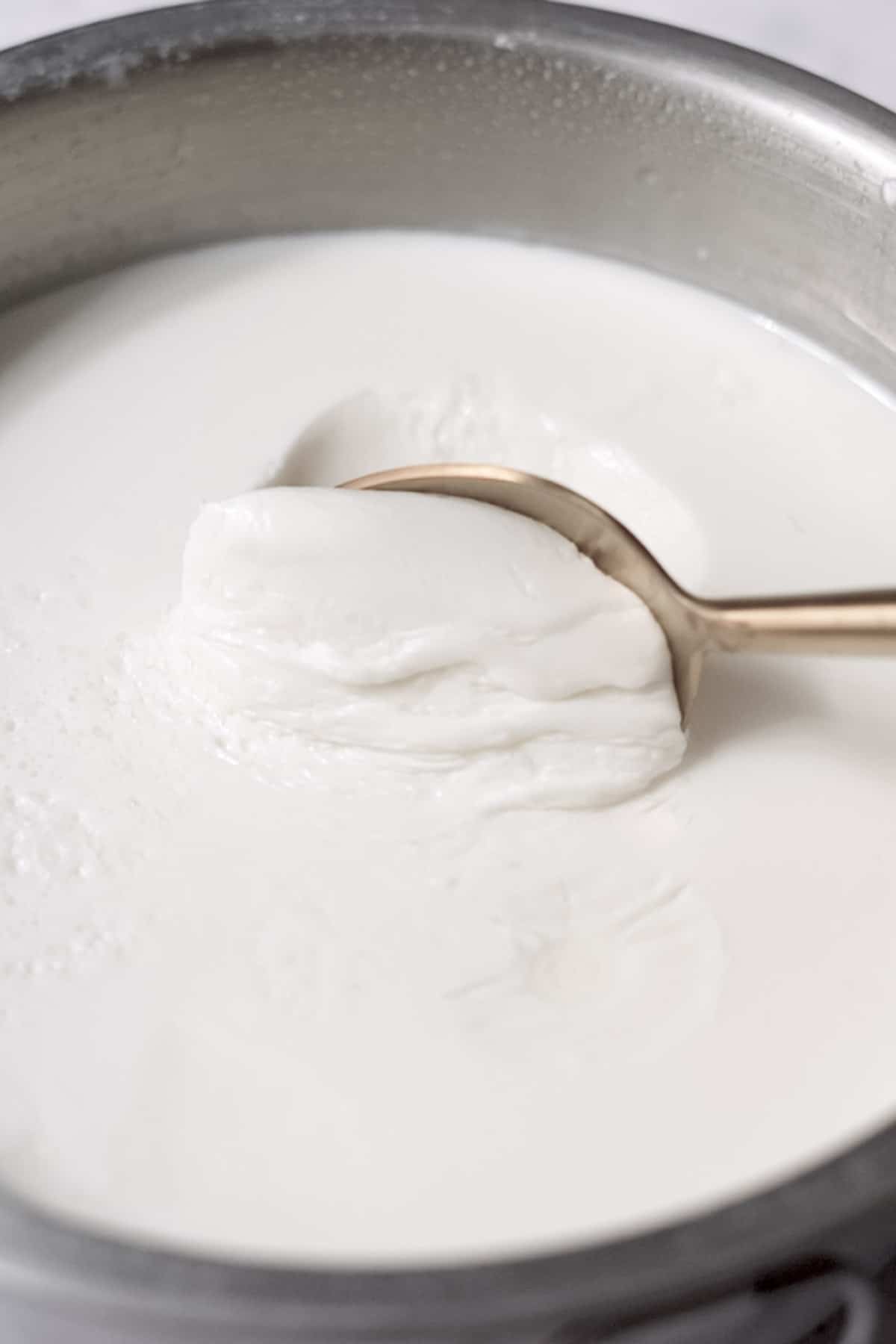
Dahi - Translated to curd, dahi is cultured milk that is boiled, frothed, and mixed with a starter to make an Indian-style yogurt in the Indian subcontinent. Full-fat plain yogurt or Greek yogurt work as substitutes.
Fruits and Veggies - Pomegranates adds a juicy crunch and a pop of color. Use about 1 whole pomegranate for 4 servings. Persian cucumbers add another crunch and freshness. English cucumbers will work as well. Shredded carrots are optional but make a great addition for texture.
Tadka - The tadka for Curd Rice is traditionally a neutral oil starting with mustard seeds and urad dal. From there, a bit of spice from serrano peppers, dried red chilis, or Indian green chilis is up to you based off of availability and spice tolerance. Asafoetida (or hing) adds that savory garlic and onion taste to the curd, and some grated ginger would be a great addition as well. Lastly, top it off with fresh or dried curry leaves. I get mine from the Indian store for $1 and also have this curry leaf plant from Etsy.
How to make Curd Rice
Start making Curd Rice by starting with the curd and rice (obviously). If you're making fresh rice, you'll want to cook that according to instruction until fluffy and then let it cool off.
Homemade dahi is typical when making Curd Rice at home. To make dahi at home, you'll only need whole milk and a dahi starter. It takes from 3-7 hours depending on setting time, so plan ahead. However, store-bought works just fine. Give the dahi a whisk first until it's smooth.
In a bowl, combine twice the amount of dahi to the amount of rice until the rice is well coated. You can also mush the rice with a fork if you'd like a softer texture that's ideal for children.
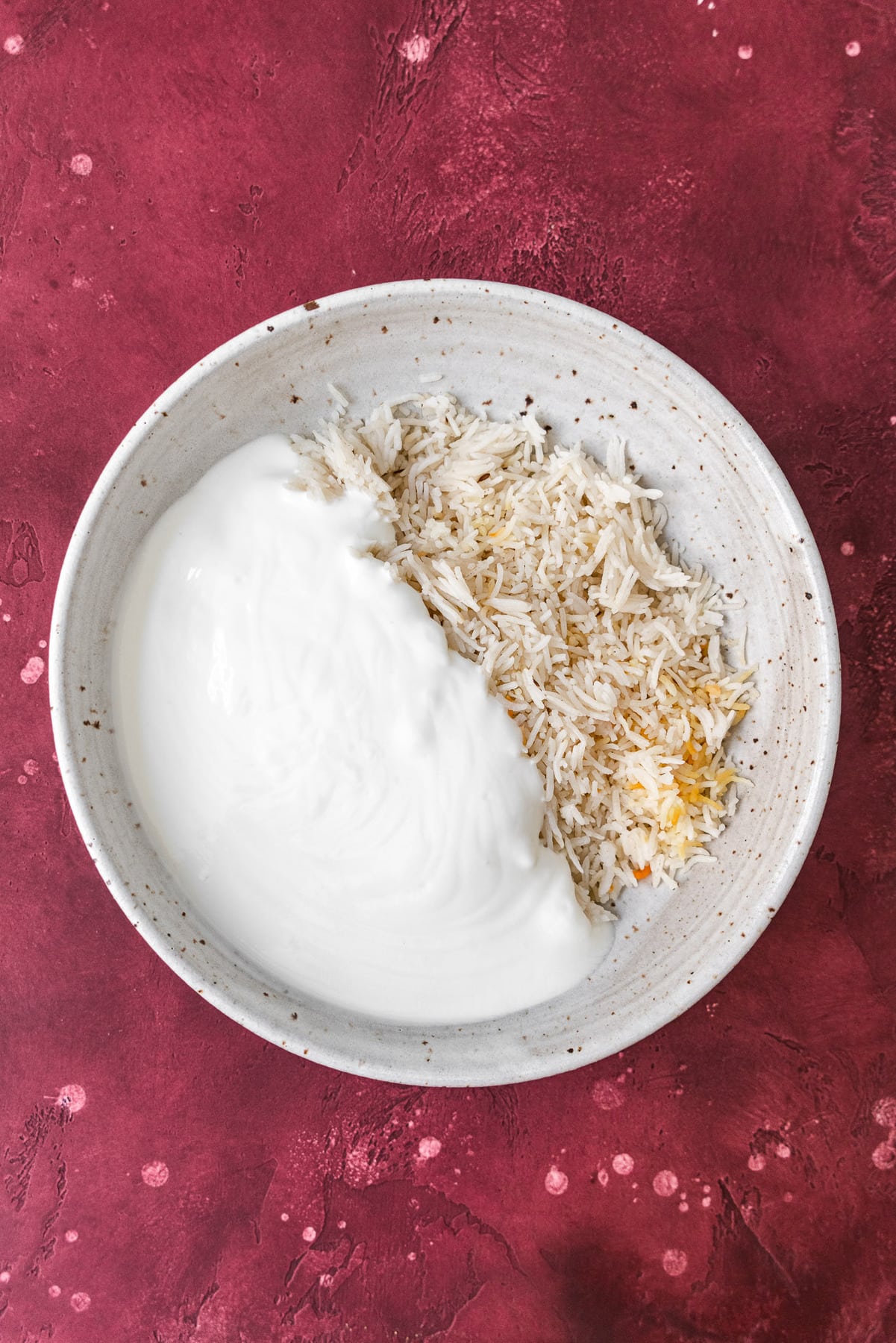
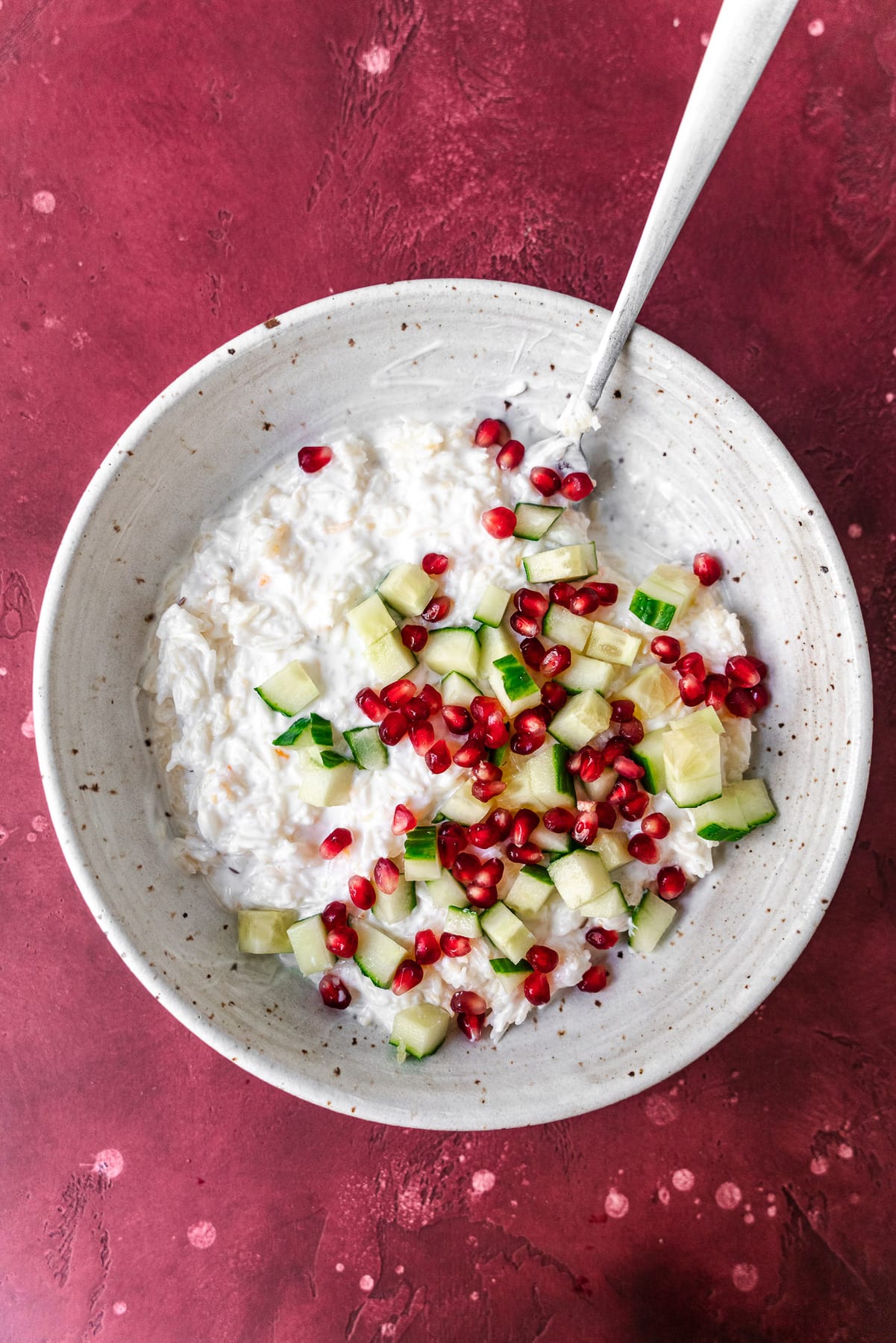
Next, prep any fresh vegetables or fruit such as cubing the cucumber, peeling the pomegranate, and shredding carrots. Salt everything to taste. Mix them together with the rice.
Lastly, the tadka. Start with a small pot or a tadka pan on medium heat with neutral oil. I use a mini 8 ounce Le Creuset cocotte. Once the oil is hot hot hot, add the mustard seeds. They'll begin to pop and dance in the oil which is when I add the dal.
Once the dal browns just a tiny bit, adds the chilis and curry leaves. You'll want to mix every now and then with a spoon or chopsticks so it doesn't burn.
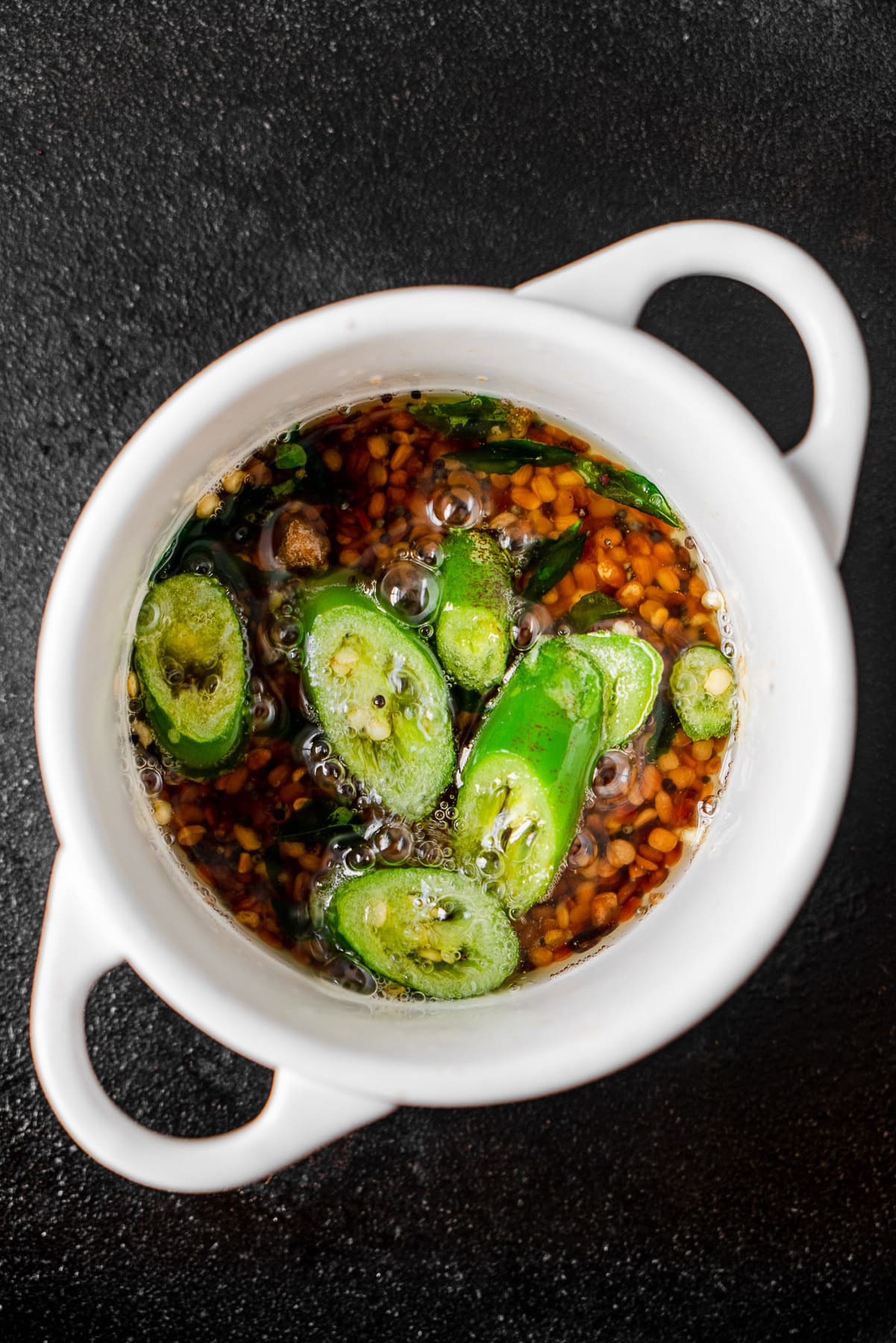
Pro tip: Be careful when adding fresh curry leaves. The moisture from the leaves will cause the oil to sputter violently so you may want to cover the tadka pan as soon as you drop them in or step away. The curry leaves will start to lightly brown and crisp up after a minute.
Remove the tadka pan from heat at this point. Add the powdered asafoetida and then pour the tadka over the bowl of curd and rice. Mix everything together and then it's ready to serve.
Serving Instructions
Garnish Curd Rice with roasted nuts, like peanuts or cashews, and cilantro. Popular accompaniments are pickles, also known as achaar, or papadum.
It's best served chilled in medium-sized bowls or banana leaves during lunch or dinner. Curd Rice is also best served in the spring and summer to balance out warm temperatures.
Serve it as a side to Dosa Waffles for a hearty, delicious lunch.
Tips and Tricks
Getting the perfect rice. As I mentioned, I personally make Curd Rice when I have leftover rice from takeout and dahi that needs to be used. However, you can also make fresh, fluffy rice depending on your preference in texture. If you like long, defined grains then I recommend basmati rice. If you want something that's mushy, use short grain rice or alternatively mash basmati rice with the yogurt to break down the long grains.
You'll also want the rice to be cool instead of fresh and warm. Warm rice against cold dahi may cause separation.
Whey separation. The whey may separate from the curd rice over time, resulting in some runny parts. Again, you'll want to make sure the curd and rice are both cold when combined. But curd rice can be stirred back together.
The curd rice is sour. Curd Rice will stay fresh for a few hours thanks to the strong tadka, however excess oil may start rising to the top and the bacteria will start doing its work.
Refrigerate the dish for up to two days. Past that, it'll start to be stinky and taste sour. It'll need to be discarded at this point.
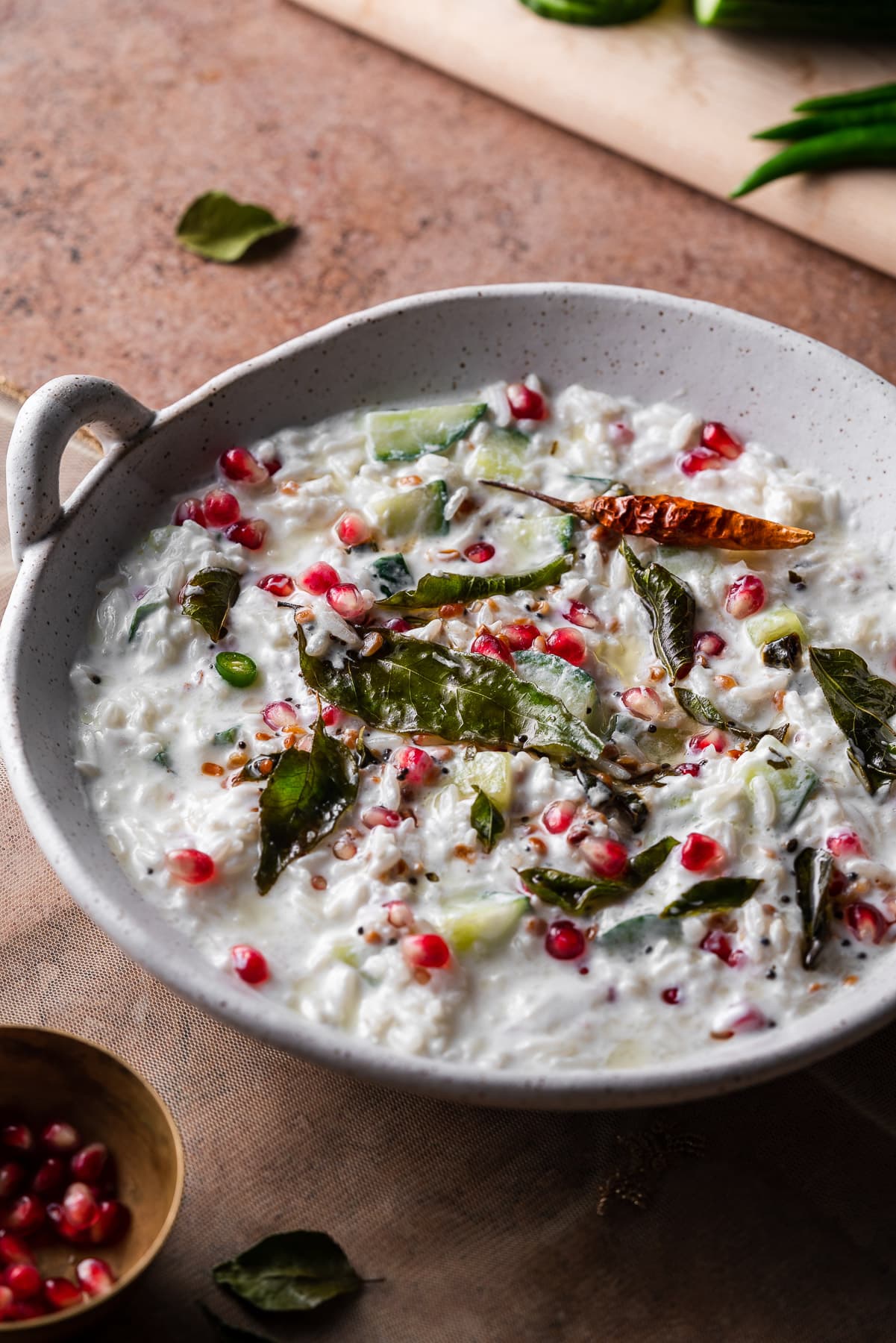
More Recipes with Dahi
Recipe
Want to Save This Recipe?
Thinking about making this recipe? Enter your email and I'll send it straight to your inbox to save for later. Plus, get new recipe inspiration from me every week!
By submitting this form, you consent to receive emails from Masala and Chai.
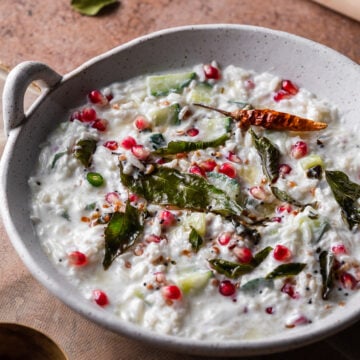
Curd Rice
Equipment
Ingredients
- 1 cup basmati rice, cooked
- 2 cup dahi
- salt, to taste
- 1 pomegranate
- 1 persian cucumber, diced
- 2 tablespoon shredded carrots, optional
- 1 tablespoon neutral oil
- ½ teaspoon mustard seeds
- 1 tablespoon urad dal
- 1 serrano pepper, chopped
- pinch of asafoetida
- 1 sprig curry leaves
- 1 dried red chili
- cilantro, roasted cashews / peanuts, for garnish
Instructions
- Cook the white rice according to package instructions and allow it to cool completely.Note: Or use leftover rice from takeout or last night's dinner.
- Dice the cucumber and remove the arils from the pomegranates. Chop the serrano pepper into slices, optionally removing the seeds. Remove the curry leaves from the stem.
- Combine the white rice and dahi in a large bowl. Then mix in the pomegranate arils, cucumber, and optionally shredded carrots. Add salt to taste.
- In a tadka pan, heat 1-2 tablespoons of a neutral oil. Once the oil starts to shimmer, add in the mustard seeds. As the mustard seeds start to pop, add the urad dal and dried red chili to the pan. The urad dal will start to turn a golden, color. At this point, add the chopped serrano pepper and curry leaves. Once the curry leaves become crispy, remove the tadka spoon from heat and add a pinch of asafoetida.
- Pour the tadka over the rice and yogurt. Stir everything together so the tadka is well distributed.
- Serve it chilled with cilantro and roasted cashews or peanuts for garnish. Enjoy with achaar or papad.
Notes
- Be careful when adding fresh curry leaves. The moisture from the leaves will cause the oil to sputter violently so you may want to cover the tadka pan as soon as you drop them in or step away. The curry leaves will start to lightly brown and crisp up after a minute.
- Whey separation. The whey may separate from the curd rice over time, resulting in some runny parts. Make sure the curd and rice are both cold when combined. But curd rice can be stirred back together.

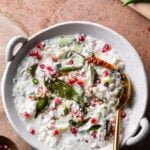
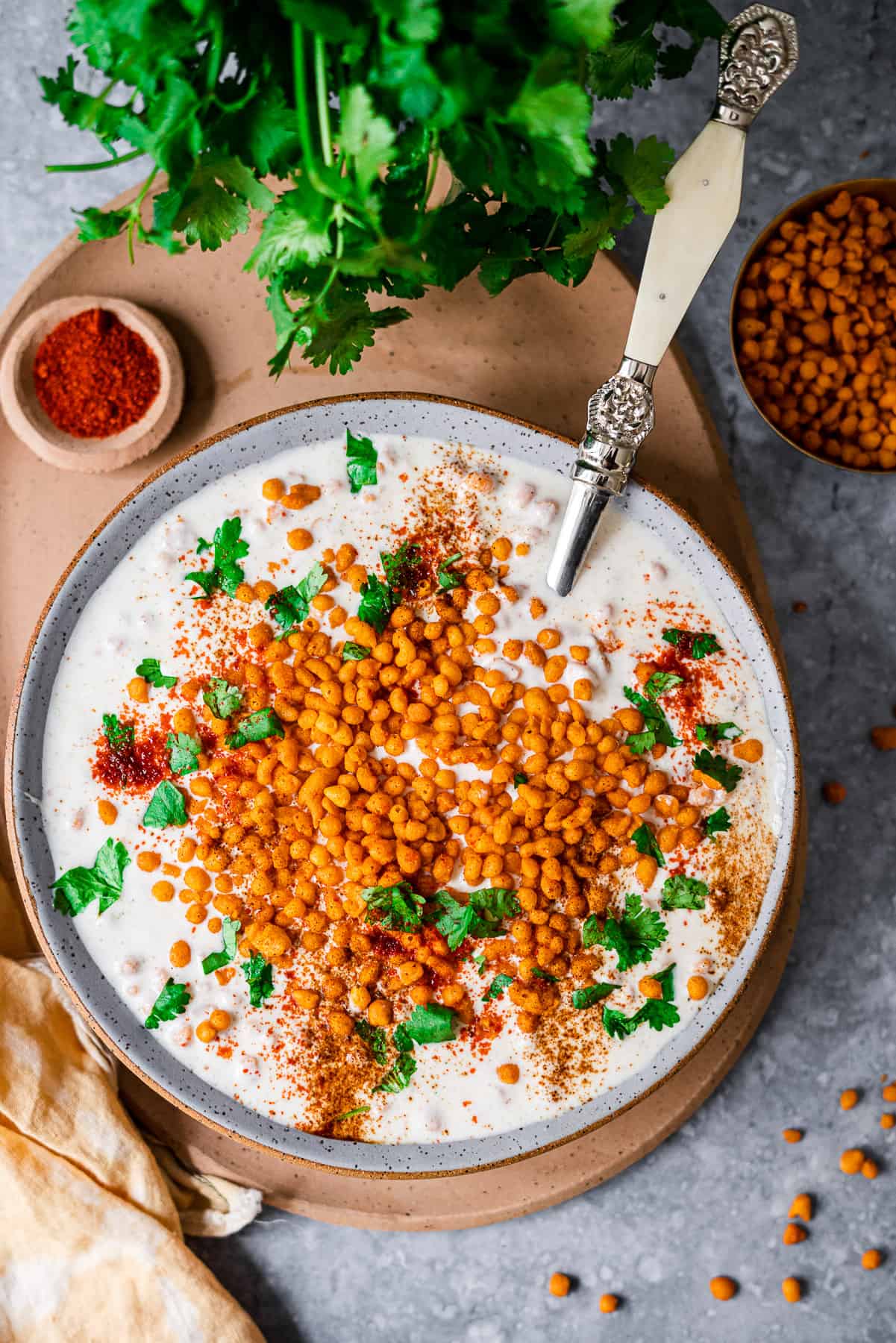
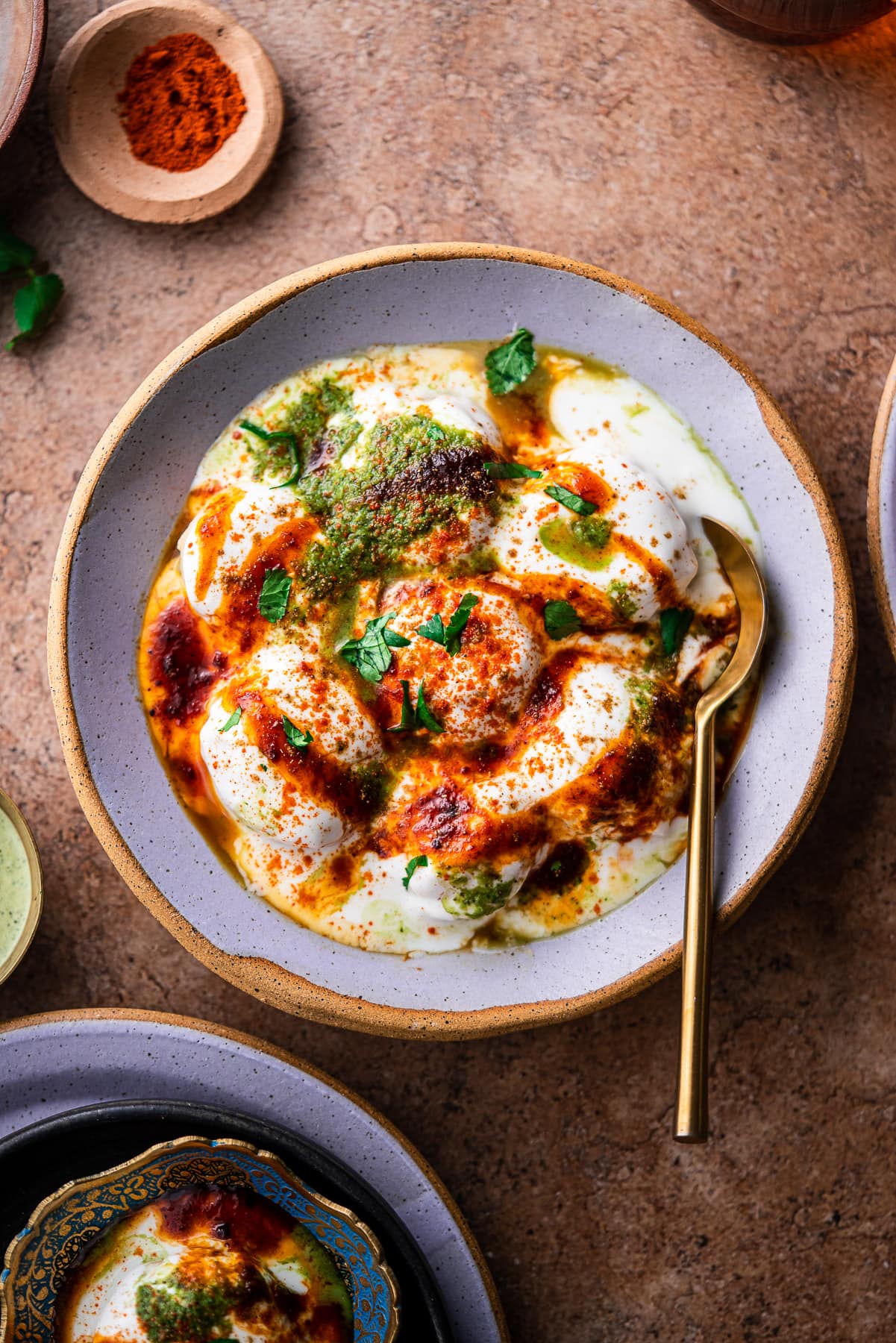
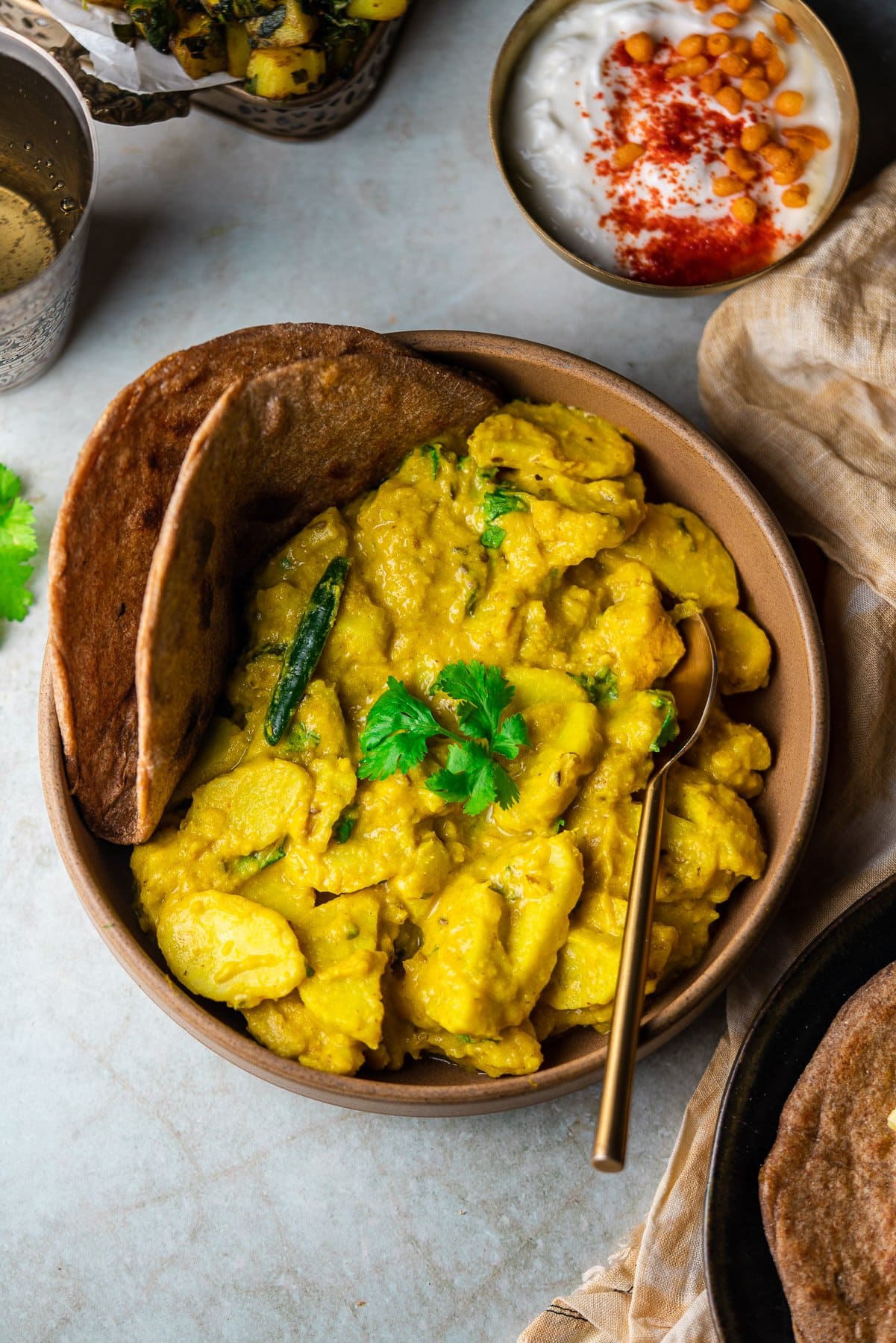
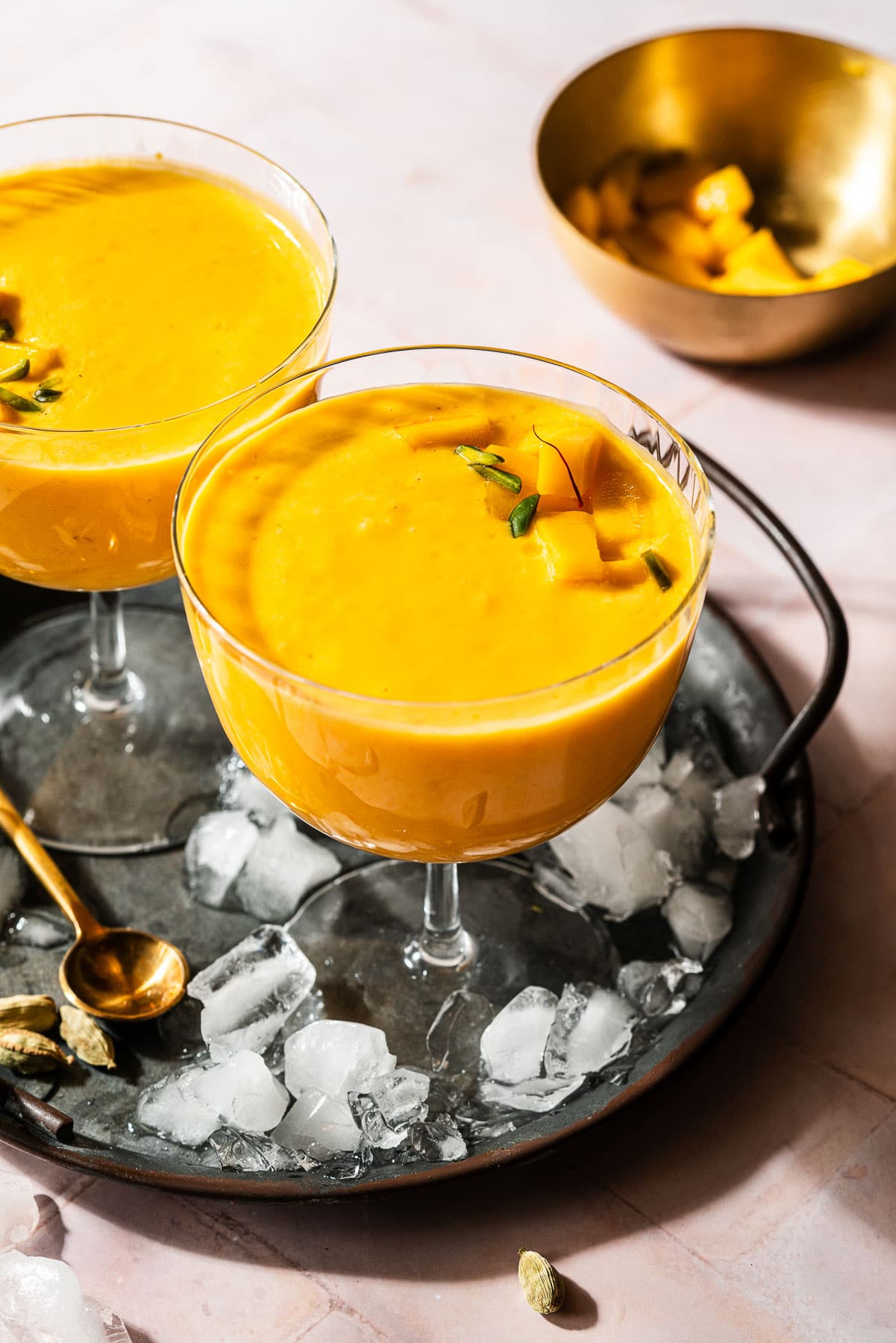
Leave a Reply